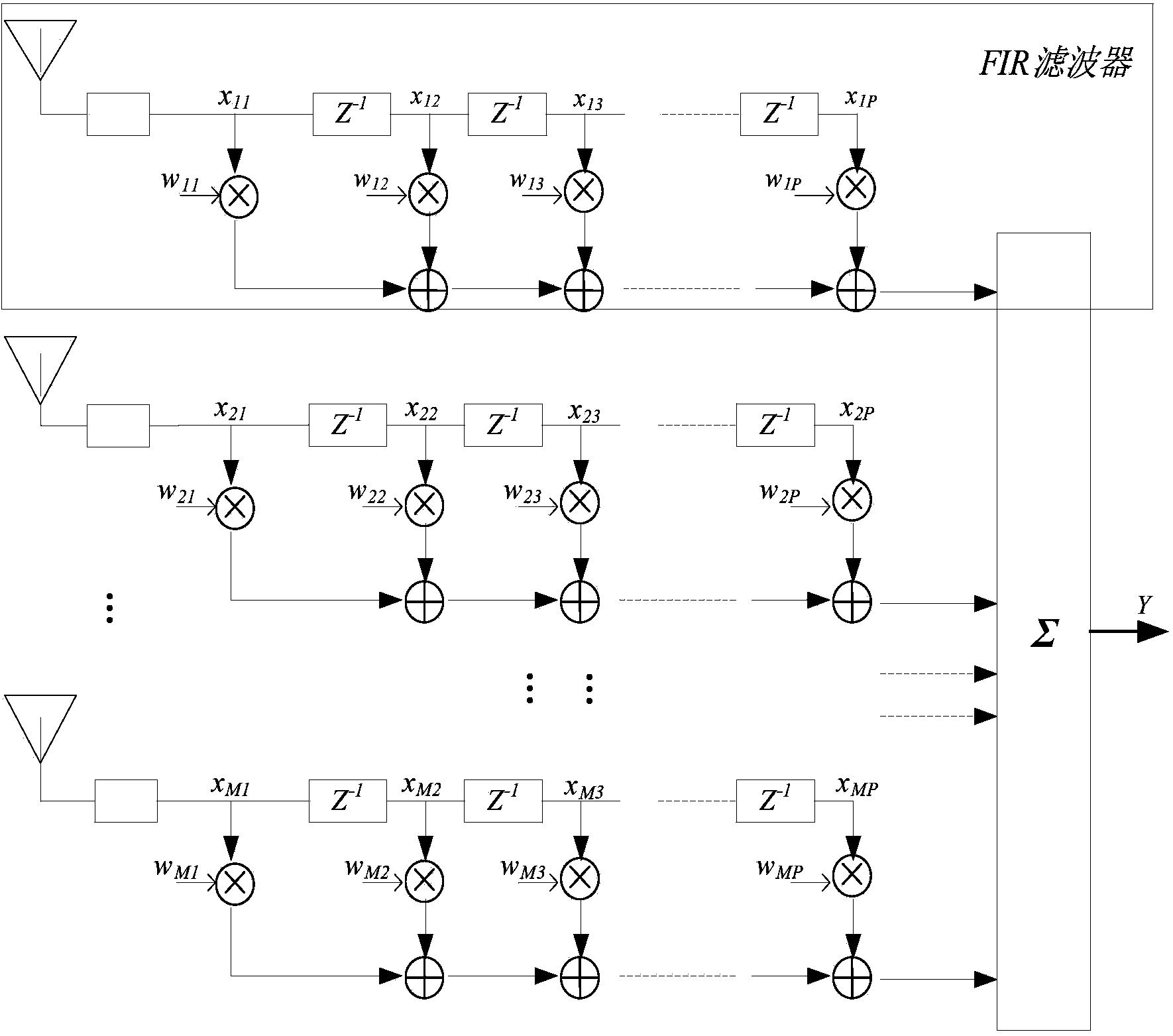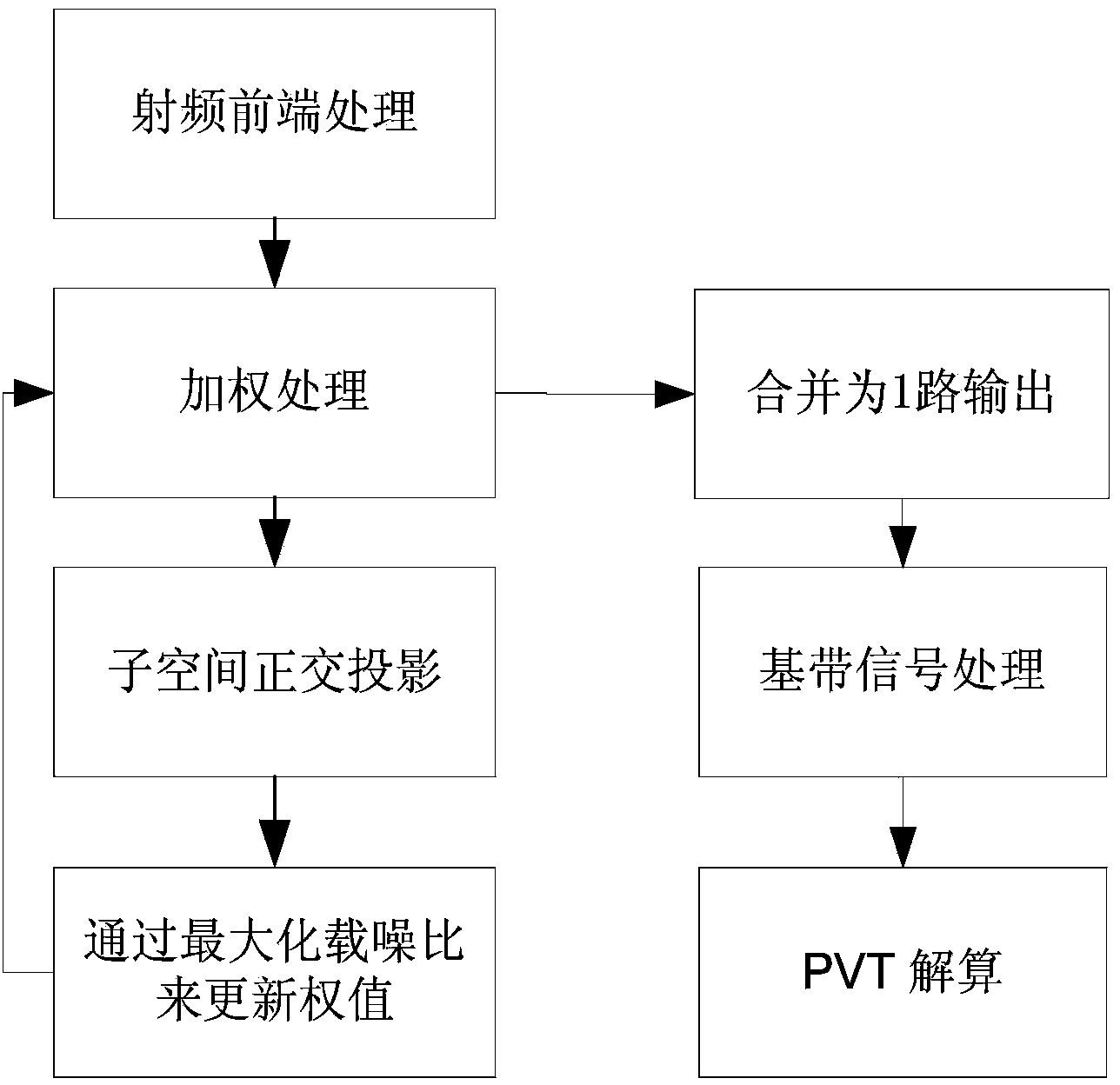Space-time adaptive anti-interference method for satellite navigation receiver
A space-time self-adaptive, satellite navigation technology, applied to satellite radio beacon positioning systems, measuring devices, instruments, etc., to achieve the effect of improving the quality of received signals and improving the performance of capture and tracking
- Summary
- Abstract
- Description
- Claims
- Application Information
AI Technical Summary
Problems solved by technology
Method used
Image
Examples
Embodiment Construction
[0020] refer to figure 1 , is a structural schematic diagram of performing space-time adaptive processing through an FIR filter in the prior art. combine figure 1 , in the existing space-time adaptive processing method, a plurality of array elements of the antenna array are usually used to receive signals, and the number of array elements of the antenna array is denoted as M, and M is a natural number greater than 1. An FIR filter with a delay unit of P is set behind each array element of the antenna to perform space-time adaptive processing, and P is a natural number greater than 1. use w mp Indicates the p-th delay unit coefficient of the m-th FIR filter, m ranges from 1 to M, and p ranges from 1 to P. use x m (n) represents the received signal of the mth array element at the n moment, then the snapshot (snapshot) data x of the mth array element at the n moment m (n) is:
[0021] x m (n)=[x m (n),x m (n-1),...x m (n-P+1)] T
[0022] Among them, the superscript T ...
PUM
 Login to View More
Login to View More Abstract
Description
Claims
Application Information
 Login to View More
Login to View More - R&D
- Intellectual Property
- Life Sciences
- Materials
- Tech Scout
- Unparalleled Data Quality
- Higher Quality Content
- 60% Fewer Hallucinations
Browse by: Latest US Patents, China's latest patents, Technical Efficacy Thesaurus, Application Domain, Technology Topic, Popular Technical Reports.
© 2025 PatSnap. All rights reserved.Legal|Privacy policy|Modern Slavery Act Transparency Statement|Sitemap|About US| Contact US: help@patsnap.com



